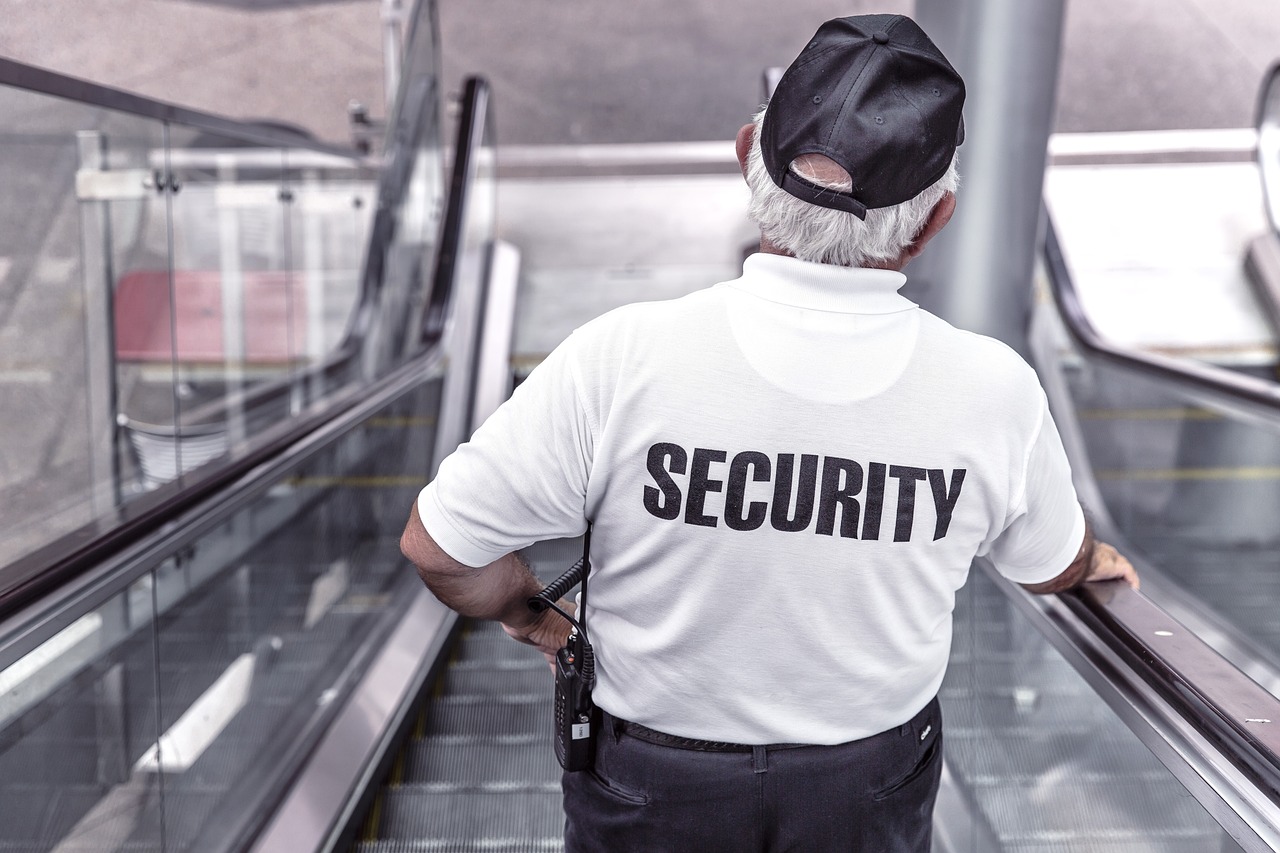Planning for Pet Safety during Emergencies
When it comes to our furry friends, their safety during emergencies is just as important as our own. Imagine being in the middle of a hurricane or an unexpected evacuation, and your pet is scared, confused, and unprepared. That scenario is something no pet owner wants to face. In this article, we’ll dive into essential strategies and tips that will help you ensure the safety and well-being of your pets during emergencies, whether they are natural disasters, sudden evacuations, or other unexpected situations. It's not just about having a plan; it's about creating a sense of security for both you and your pets.
First off, let’s talk about the importance of planning. Just like you would prepare for a family emergency, your pets deserve the same level of consideration. They rely on you for their safety and comfort, and being proactive can make all the difference. Think of yourself as their superhero—ready to swoop in and protect them when chaos strikes. So, grab a cup of coffee, sit back, and let’s explore how you can become the ultimate pet safety planner!
Throughout this article, we’ll cover various aspects of emergency preparedness, including understanding the risks, creating an emergency kit, developing evacuation plans, effective communication strategies, and how to care for your pets after an emergency. Each section will equip you with the knowledge and tools you need to keep your pets safe and sound when it matters most.
Remember, emergencies can happen at any time, and being prepared is the best way to ensure that your beloved pets remain safe and secure. So, let’s roll up our sleeves and get started on this important journey of pet safety planning!
Identifying potential emergency risks in your area is crucial for effective planning. Emergencies can vary widely, ranging from natural disasters like hurricanes, floods, and wildfires to man-made incidents such as chemical spills or civil unrest. Each of these scenarios can have a unique impact on your pets, and understanding these risks is the first step in safeguarding them.
For instance, if you live in a region prone to floods, it’s essential to consider how rising water levels might affect your home and your pets. Similarly, if wildfires are common in your area, having a plan in place for evacuation is vital. Take a moment to assess the risks specific to your location. You might even want to create a simple table to compare different risks and their potential impacts on your pets:
| Emergency Type | Potential Impact on Pets |
|---|---|
| Hurricane | Flooding, high winds, and power outages |
| Wildfire | Smoke inhalation, evacuation needs |
| Earthquake | Displacement, injury from falling objects |
| Chemical Spill | Toxic exposure, need for evacuation |
By understanding the specific risks in your area, you can tailor your emergency planning to address those challenges effectively. This proactive approach not only protects your pets but also gives you peace of mind knowing you’ve done everything possible to keep them safe.
An emergency kit for pets is vital for their safety and well-being during crises. Just like you would pack essentials for yourself, your pets need their own supplies to weather any storm. Think of this kit as a lifeline for your furry companions, ensuring they have everything they need when the unexpected occurs. So, what should you include in this all-important kit?
Start with the basics: food, water, identification, and comfort items. Here’s a quick breakdown of what to pack:
- Food: Enough for at least a week, plus a manual can opener if you're using canned food.
- Water: At least one gallon per pet per day.
- Identification: Collars with ID tags and microchip information.
- Comfort Items: Favorite toys, blankets, or anything that smells like home.
Having these items readily available can significantly reduce stress for both you and your pets during an emergency. It’s like having a safety net that you can rely on when things get tough.
Q: What should I do if I can't take my pet with me during an evacuation?
A: If you cannot take your pet, try to find a pet-friendly shelter or hotel in advance. Always have a list of local shelters and pet boarding facilities ready.
Q: How often should I check my emergency kit?
A: It's a good idea to check your emergency kit every six months. Make sure food and water are fresh, and update any necessary items as your pet's needs change.
Q: Is microchipping really necessary?
A: Yes! Microchipping is a reliable way to ensure your pet can be identified and returned to you if they get lost during an emergency.

Understanding Emergency Risks
When it comes to our furry friends, understanding the potential emergency risks in your area is not just a precaution—it's a necessity. Imagine the chaos of a natural disaster or an unexpected incident occurring while you're unprepared. It’s like trying to catch a falling star; you need to be ready before it happens. Emergencies can range from natural disasters like hurricanes, floods, and earthquakes to man-made incidents such as chemical spills or power outages. Each of these scenarios poses unique challenges that can significantly impact the safety and well-being of your pets.
Consider this: during a hurricane, high winds and flooding can create dangerous conditions that may force you to evacuate. In such situations, pets can easily become disoriented or lost. It's essential to be aware of the specific risks your area faces. For example:
- Natural Disasters: Earthquakes, floods, tornadoes, and wildfires.
- Man-Made Incidents: Chemical spills, industrial accidents, and civil unrest.
- Health Emergencies: Outbreaks of diseases that can affect pets.
Each type of emergency can have a different impact on your pets. For instance, during an earthquake, pets may become anxious or frightened, leading them to hide or run away. In the case of a flood, the immediate danger of rising water can pose a risk to their safety. Understanding these risks is the first step in creating an effective emergency plan that keeps your pets safe.
Moreover, it’s not just about the event itself; the aftermath can also be perilous. After a disaster, there may be debris, unsafe structures, or even other animals that can pose threats. Therefore, being prepared means not only having a plan before an emergency strikes but also knowing how to react once it's over. Think of it as a safety net—the more you know, the more secure you and your pets will feel.
In summary, understanding emergency risks is about being proactive. By identifying the potential threats in your area, you can tailor your emergency plans to address those specific dangers. This foresight not only enhances your pets' safety but also provides you with peace of mind, knowing that you’ve taken steps to protect your beloved companions in any situation.

Creating an Emergency Kit
When it comes to ensuring the safety of our beloved pets during emergencies, having an emergency kit is not just a good idea; it’s essential. Imagine facing a natural disaster or an unexpected evacuation without the necessary supplies for your furry friend. The thought alone can send chills down your spine! By preparing an emergency kit tailored for your pet, you can rest easy knowing that you're ready for anything that comes your way.
Your pet’s emergency kit should include a variety of items that cater to their specific needs. Just like you would pack your essentials, your pet requires their own set of supplies to stay safe and comfortable. Here are some critical components to consider:
- Food and Water: Make sure to stock up on at least a week's supply of your pet's food and fresh water. It's also wise to include a manual can opener if your pet eats canned food.
- Medications: If your pet is on any medications, be sure to include a sufficient supply along with a copy of their prescriptions.
- Identification: Have a current photo of your pet and ensure they have a collar with an ID tag. Microchipping is also highly recommended for added security.
- Comfort Items: Pack a favorite toy or blanket to help soothe your pet during stressful times.
By assembling these items in a sturdy, waterproof container, you can ensure that everything stays organized and accessible. You might even want to label the kit clearly so that anyone else who may need to help your pet can easily identify it. It’s also a good idea to regularly check the contents of the kit, especially the food and medication, to ensure that everything is up-to-date and in good condition.
Moreover, consider the unique needs of your pet. For instance, if you have a cat, you might want to include a portable litter box and litter. For dogs, a leash and muzzle may come in handy, especially if they are anxious in unfamiliar situations. Tailoring your kit to your pet's specific requirements not only shows your love but also prepares you for any eventuality.
While creating your emergency kit, think about the logistics of transportation. If you need to evacuate, having a pet carrier that is easy to transport can make a world of difference. Ensure your pet is comfortable with their carrier ahead of time, as this familiarity can help reduce anxiety during an emergency.
In conclusion, creating an emergency kit for your pet is a proactive step that every pet owner should take. It not only provides peace of mind but also ensures that your furry friend has everything they need during a crisis. Remember, being prepared is the best way to keep your pet safe!
Q: How often should I check my pet's emergency kit?
A: It's recommended to check your pet's emergency kit every six months to ensure that food, medications, and other supplies are fresh and in good condition.
Q: What should I do if my pet has special dietary needs?
A: Make sure to include special food and any necessary supplements in your emergency kit. Consult your veterinarian for specific recommendations.
Q: How can I help my pet adjust to their emergency kit?
A: Introduce your pet to their carrier and the items in the kit well before an emergency. This will help them feel more comfortable and reduce anxiety during a crisis.

Food and Water Supplies
When it comes to ensuring your pet's safety during emergencies, are absolutely crucial. Just like you wouldn’t want to go without your favorite snacks during a crisis, your furry friends need their essentials too! Imagine being in a situation where you’re evacuated from your home, and you don’t have the right food or enough water for your pet. It’s a stressful thought, isn’t it? To avoid this, planning ahead is key.
First things first, how much food and water should you store? A good rule of thumb is to have at least a three-day supply of food and water for each pet. This means if you have a dog and a cat, you should have enough for both. But it doesn’t stop there; consider the size of your pets and their specific dietary needs. For example, a large breed dog will require more food than a small breed, and pets with special dietary restrictions may need specific types of food that can be harder to find in a pinch.
When choosing food, look for nutritious options that can be stored easily. Dry kibble is a great choice because it has a long shelf life and doesn’t require refrigeration. However, if your pet is used to wet food, consider purchasing a few cans and rotating them out regularly to ensure freshness. It’s also a good idea to keep track of expiration dates; nobody wants to find out that the emergency stash has gone bad!
Now, let’s talk about water. Water is the lifeblood of survival, and your pet is no exception. You should aim to store at least one gallon of water per pet per day. In case of emergencies, it’s wise to have a water storage plan. Use clean, food-grade containers to store water, and remember to replace the water every six months to keep it fresh. Consider adding a portable water bowl in your emergency kit, so you can easily provide hydration on the go.
In summary, being prepared with the right food and water supplies for your pet can make all the difference in an emergency. By planning ahead and considering your pet’s unique needs, you can ensure their safety and comfort during challenging times. So, take a moment to gather these supplies and put them in a designated spot. Trust me, your pet will thank you for it later!
- How often should I check my pet's emergency supplies? It's best to check your supplies every six months to ensure everything is fresh and up to date.
- What if my pet has special dietary needs? Be sure to include their specific food in your emergency kit and consult with your vet for any additional recommendations.
- Can I use tap water for my pet's emergency supply? Yes, but make sure to store it in clean containers and replace it regularly to avoid contamination.
- How can I keep my pet calm during an emergency? Familiar items like toys or blankets can help comfort your pet. Also, maintaining a calm demeanor yourself can greatly influence your pet's behavior.

Choosing the Right Food
When it comes to ensuring your pet's safety during an emergency, one of the most critical aspects is selecting the right food. Just like humans, pets have specific dietary needs that must be met, especially in stressful situations. Imagine trying to make it through a crisis on an empty stomach or with the wrong kind of food; it’s not just uncomfortable, it can also affect your pet’s health and mood. So, what should you consider when choosing the right food for your furry friends during emergencies?
First and foremost, think about your pet's individual dietary requirements. Are they on a special diet due to allergies or health conditions? If so, it's essential to have enough of their specific food on hand. Look for options that have a long shelf life and are easy to store. For instance, canned food or vacuum-sealed packages can be great choices as they usually last longer than dry kibble. Always check the expiration dates and rotate your stock regularly to ensure freshness.
Another important factor to consider is portion sizes. In stressful situations, your pet might not eat as much as they normally do, but it’s still crucial to have enough available. A good rule of thumb is to store at least a week’s worth of food for each pet. For example, if your dog eats about two cups of food a day, then you should have at least 14 cups of food stored away. You can use the following table as a quick reference for calculating the amount of food needed:
| Pet Type | Daily Food Intake (cups) | Recommended Storage (days) | Total Food to Store (cups) |
|---|---|---|---|
| Dog (Small) | 1 | 7 | 7 |
| Dog (Medium) | 2 | 7 | 14 |
| Dog (Large) | 4 | 7 | 28 |
| Cat | 0.5 | 7 | 3.5 |
Moreover, don't forget to include a manual can opener if you opt for canned food! It's a small detail, but in an emergency, every little thing counts. Additionally, consider including some treats in your emergency food supply. Treats can serve as a morale booster for your pet during stressful times, helping to keep their spirits up.
Lastly, always keep your pet's food in a cool, dry place to maintain its quality. Temperature fluctuations can affect the food's integrity, especially for dry kibble. If you’re unsure about the best storage methods, consult your veterinarian for personalized recommendations based on your pet's needs.
In summary, choosing the right food for your pet during emergencies involves understanding their dietary requirements, calculating the right portions, and ensuring proper storage. It’s about being prepared so that when the unexpected happens, you can focus on what really matters—keeping your pet safe and sound.
- How much food should I store for my pet during emergencies? It’s recommended to have at least a week's worth of food based on your pet's daily intake.
- What types of food are best for emergency kits? Canned food and vacuum-sealed packages are ideal due to their long shelf life.
- Should I include treats in my emergency kit? Yes! Treats can help keep your pet’s spirits up during stressful situations.

Water Storage Tips
When it comes to ensuring your pet's safety during emergencies, water storage is a critical aspect that often gets overlooked. Just like humans, pets need access to fresh water, especially in stressful situations where they might be more active or anxious. The key to effective water storage is not just having enough, but also ensuring that it remains safe and palatable for your furry friends. So, what are the best practices for storing water for your pets? Let's dive in!
First and foremost, it's essential to store enough water for your pet. A general rule of thumb is to have at least one gallon of water per pet per day for a minimum of three days. This means if you have two pets, you should aim for at least six gallons of water. However, it's wise to consider the length of time you might be without water, so having a bit more is always better. Additionally, remember to rotate your water supply every six months to ensure freshness.
When it comes to containers, choose food-grade plastic or glass bottles for storage. Avoid using containers that have previously held chemicals or non-food substances, as they can leach harmful substances into the water. If you’re using plastic containers, ensure they are BPA-free to keep your pet safe. A great option is to use sealed, sturdy containers that can withstand the rigors of an emergency situation.
Another important tip is to keep your water stored in a cool, dark place. Exposure to sunlight can promote the growth of algae and bacteria, which can contaminate the water. Ideally, find a spot in your home that is away from direct sunlight, such as a basement or a closet. If you’re storing water outside, ensure it’s in a shaded area and protected from the elements.
To make it easier to transport water during an evacuation, consider using smaller, portable containers. This way, you can grab multiple bottles and take them with you without having to lug around heavy jugs. Additionally, having a mix of sizes can be useful for different situations—larger containers for home use and smaller ones for travel.
Lastly, don’t forget to label your water containers with the date of storage. This simple practice will remind you when it’s time to refresh your supply. Keeping track of your water storage not only helps maintain your pet’s health but also ensures that you are prepared for any emergency that may arise.
By following these water storage tips, you can ensure that your pets stay hydrated and healthy during emergencies. Remember, a little preparation goes a long way in keeping your furry family members safe!
- How much water should I store for my pet? Aim for at least one gallon of water per pet per day for a minimum of three days.
- Can I use any container for storing water? No, use food-grade plastic or glass containers to avoid contamination.
- How often should I rotate my water supply? It’s recommended to rotate your water supply every six months to ensure freshness.
- Where is the best place to store water? Store water in a cool, dark place away from direct sunlight.

Identification and Microchipping
When the unexpected strikes, the last thing you want is to lose your furry friend in the chaos. That's where identification and microchipping come into play. These two simple yet effective measures can significantly increase the chances of reuniting with your pet if they become lost during an emergency. Think of it as giving your pet a safety net that they can rely on when circumstances go haywire.
First off, let's talk about identification. A sturdy collar with an ID tag is a must-have. This tag should include your pet's name, your contact number, and any pertinent medical information. It's like a little billboard that carries essential details about your pet, making it easier for someone to help them if they wander off. But don’t stop there! It's wise to have a backup plan, too. This is where microchipping comes into play.
Microchipping is a quick and painless procedure where a tiny chip, about the size of a grain of rice, is implanted under your pet's skin. This chip contains a unique identification number that can be scanned by veterinarians or animal shelters. If your pet gets lost and is found, all it takes is a simple scan to retrieve your contact information from a national database. It’s like giving your pet a digital identity card that never gets lost!
So, why is microchipping so important? Well, statistics show that pets with microchips are more than twice as likely to be returned to their owners than those without. This is especially crucial during emergencies when pets can get frightened and run away. Imagine your pet getting spooked by a loud noise during a storm and escaping through an open door. Without proper identification, the chances of finding them decrease dramatically.
It's also worth noting that microchips are not a substitute for a collar and ID tag. They work best when used together. While a collar can provide immediate information to someone who finds your pet, the microchip serves as a permanent form of identification that can't fall off or be removed. It's the best of both worlds!
Now, let’s address a common concern: “What if my pet gets lost and their microchip is not registered?” This is a crucial point. Always ensure that your microchip is registered with your current contact information. If you move or change your phone number, update the information to keep it current. Many people forget this step, and it can be heartbreaking if a found pet is unable to be reunited with their owner due to outdated information.
In conclusion, investing in both identification tags and microchipping is a small price to pay for the peace of mind it brings. It’s a proactive approach to ensure your furry companion can always find their way back home, even in the most chaotic of situations. So, take a moment to check your pet's ID tag and schedule that microchip appointment. After all, when it comes to your pet's safety, every little bit helps!
- How much does microchipping cost? Microchipping typically costs between $25 to $50, depending on the vet or organization.
- Is microchipping safe for my pet? Yes, microchipping is a safe and routine procedure performed by veterinarians.
- Can I track my pet with a microchip? No, microchips do not have GPS tracking capabilities; they only store identification information.
- How often should I check my pet's ID tag? It's a good idea to check your pet's ID tag every few months to ensure the information is still accurate.

Evacuation Plans for Pets
When it comes to ensuring the safety of our furry friends during an emergency, having a well-thought-out evacuation plan is crucial. Just like we prepare ourselves, we must also prepare our pets for the unexpected. Imagine the chaos of a sudden evacuation: sirens blaring, people rushing, and the last thing you want is to be scrambling to figure out how to get your pet to safety. That’s why planning ahead can make all the difference between a smooth transition and a stressful experience.
The first step in creating an effective evacuation plan is to designate safe locations where you can take your pets. Not all shelters accept animals, so it’s essential to research pet-friendly options in advance. This could include local hotels, friends’ houses, or designated emergency shelters. Make a list of these places along with their contact information, so you have it handy when you need it. You can even create a simple table to organize this information:
| Location | Contact Number | Pet Policy |
|---|---|---|
| Local Shelter | (555) 123-4567 | Pet-friendly |
| Friend’s House | (555) 987-6543 | Pet-friendly |
| Nearby Hotel | (555) 555-5555 | Pets allowed with fee |
Next, you should think about transportation preparedness. Your vehicle should be ready to accommodate your pets comfortably. This means having secure carriers or harnesses to keep them safe during transit. Make sure to practice loading and unloading your pets from the vehicle so they get used to the process. It’s also a good idea to have a pet emergency kit in your car that includes essentials like food, water, and first aid supplies. You never know when you might need them!
Another important aspect of your evacuation plan is to communicate with your family members about the plan. Everyone should know where to go and what to do in case of an emergency. This is especially important if you have multiple pets, as coordinating their safety can be a challenge. Consider designating a specific meeting point if you get separated. Having a clear plan will help reduce anxiety and confusion during a chaotic situation.
Lastly, remember that pets can sense our emotions. Keeping a calm demeanor during an evacuation will help your pets feel more secure. Talk to them soothingly and reassure them that everything will be okay. Just like us, they can experience stress and anxiety, so a little extra love and attention can go a long way in helping them cope with the situation.
In conclusion, planning for your pet’s safety during an evacuation is not just a good idea; it’s a necessity. By designating safe locations, preparing your vehicle, communicating effectively, and providing emotional support, you can ensure that your furry companions remain safe and secure during emergencies. Remember, a little planning today can lead to a safer tomorrow for both you and your pets.

Designating Safe Locations
When the unexpected happens, the last thing you want is to be scrambling for a safe place to take your beloved pet. in advance can significantly reduce stress and ensure your furry friend’s safety during emergencies. Start by identifying nearby pet-friendly shelters and accommodations, as not all evacuation sites will welcome your four-legged companions. This means doing a little research ahead of time; check local government websites and community resources to find shelters that accept pets. You can also contact hotels and motels in your area to see if they have pet policies. Remember, it’s not just about finding a place that allows pets, but also ensuring that it’s a safe and secure environment.
Another crucial aspect is to consider the distance and accessibility of these safe locations. In the chaos of an emergency, you won’t have time to figure out how to get somewhere far away. Aim for places that are within a reasonable distance from your home. This way, you can quickly evacuate without the added pressure of a long journey. It’s also wise to have a couple of backup locations in mind, just in case your primary choice becomes unavailable.
Moreover, familiarize your pet with these safe locations. If possible, take them for a visit before an emergency strikes. This can help them feel more comfortable and less anxious when they need to go there in a crisis. Just like humans, pets can feel stressed in unfamiliar environments, so a little preparation can go a long way. Consider the following factors when designating safe locations:
- Accessibility: Ensure the location is easy to reach, even in heavy traffic or bad weather.
- Pet Policies: Confirm that the location is indeed pet-friendly and inquire about any restrictions.
- Safety: Look for places that are secure, with minimal risks of escape or injury.
- Comfort: Choose locations that provide adequate space and facilities for your pet.
Finally, keep this information handy. Create a pet emergency plan that includes the names, addresses, and contact numbers of these safe locations. Store this plan in a place where you can easily access it during a crisis, such as on your phone or in your emergency kit. By taking these steps, you’ll not only ensure your pet’s safety but also give yourself peace of mind knowing that you’re prepared for whatever comes your way.

Transportation Preparedness
When it comes to evacuating with your pets, is crucial. Just like you wouldn’t hit the road without checking your car’s gas tank, you shouldn’t head out with your furry friends without ensuring their safety and comfort during travel. Think of your vehicle as a mini sanctuary for your pets during a chaotic time. It’s essential to create an environment that minimizes their stress and keeps them secure.
First and foremost, you should have a designated spot in your vehicle for your pets. This could be a pet carrier or a secured harness. If you’re using a carrier, make sure it’s well-ventilated and large enough for your pet to stand, turn around, and lie down comfortably. It’s like their little home on wheels! For larger pets, a harness that attaches to the seatbelt can keep them safe while allowing them to sit or lie down comfortably.
Next, consider the temperature inside your vehicle. During emergencies, you might be stuck in traffic or waiting for a while, so it’s important to keep the climate comfortable for your pets. If it’s hot outside, ensure your air conditioning is working, and if it’s cold, have blankets ready to keep them warm. Remember, pets can’t regulate their body temperature as effectively as humans, so keeping them comfortable is a top priority.
It’s also a good idea to have a pet travel kit ready. This kit can include:
- Food and water bowls
- Leash and collar
- Extra food and treats
- Any necessary medications
- A familiar blanket or toy to comfort them
Having these items at hand can make a world of difference in keeping your pets calm during a stressful situation. Just like you would pack snacks and drinks for a long road trip, your pets deserve the same consideration!
Lastly, don’t forget about frequent breaks during your journey. Plan for stops where your pets can stretch their legs, relieve themselves, and drink some water. This not only keeps them healthy but also helps to alleviate any anxiety they might feel during travel. Think of it as a pit stop on a long drive; everyone needs a little break now and then!
In summary, being prepared for transporting your pets during an emergency can make all the difference. By ensuring their comfort, safety, and well-being, you’re not just taking care of your pets; you’re also giving yourself peace of mind. After all, a well-prepared journey is a smoother journey for both you and your beloved companions.
Q1: What should I do if my pet is anxious during travel?
A1: If your pet shows signs of anxiety, consider using calming sprays or pheromone diffusers. Additionally, having their favorite blanket or toy can provide comfort. Regular breaks to let them stretch can also help alleviate stress.
Q2: How can I ensure my pet's safety in a car accident?
A2: Use a pet seatbelt or a secure carrier to keep your pet safe in case of sudden stops or accidents. This prevents them from becoming a projectile and minimizes the risk of injury.
Q3: Is it safe to travel with pets during emergencies?
A3: Yes, traveling with pets can be safe if you prepare adequately. Ensure they are secure, comfortable, and have access to food and water during the journey.

Emergency Communication Strategies
When an emergency strikes, chaos can reign, and the last thing you want to worry about is how to communicate about your beloved pet. Establishing effective communication strategies is essential for ensuring that everyone in your family knows what to do and where to go. Think of your communication plan as a lifeline, connecting you to your loved ones and ensuring your pets are safe. So, what should you consider when crafting this plan?
First and foremost, it's important to have a designated point of contact who is not in the immediate area when a crisis occurs. This could be a family member or a close friend who can relay messages between you and others. In the chaos of an emergency, it can be hard to reach everyone, so having that one person to communicate with can streamline the process. Make sure everyone in your household knows who this person is and how to contact them.
Next, think about how you will communicate. Will you rely on text messages, phone calls, or social media? In many emergencies, traditional phone lines can become overloaded, making it difficult to get through. Text messages often have a better chance of getting delivered, so encourage your family to use that method when possible. You might also consider setting up a group chat beforehand, so everyone is already connected and can share updates quickly.
Social media can also be a powerful tool in emergencies. Platforms like Facebook and Twitter allow you to share updates about your pet's safety with a larger audience. Create a specific hashtag for your family or pet, so updates can be easily found. For example, something as simple as #FindFluffy can help friends and family track your pet's status during a crisis.
Additionally, it’s crucial to keep a list of important contacts readily available. This list should include:
- Your veterinarian's contact information
- Local animal shelters
- Pet boarding facilities
- Friends or family members who can help
Having this information at your fingertips can be a lifesaver when you're in a hurry. You might also consider using a mobile app that keeps all your essential contacts in one place, making it easier to access them quickly.
Finally, practice your communication plan. Just as you would rehearse an evacuation drill, run through your communication strategy with your family. This practice will help everyone feel more confident and prepared when the time comes. You can even create a small cheat sheet that outlines who to contact, how to communicate, and where to find essential information. It’s all about being proactive and ensuring that your pet remains a priority, even in the most chaotic situations.
In summary, effective communication during emergencies is all about preparation and clarity. By having a clear plan in place, you can ensure that you and your loved ones, including your pets, remain safe and connected, no matter what happens.
Q: What should I include in my emergency communication plan?
A: Your emergency communication plan should include a designated point of contact, methods of communication (like text or social media), a list of important contacts, and a practice schedule for your family.
Q: How can social media help during an emergency?
A: Social media allows you to quickly share updates about your pet's safety with a larger audience, making it easier for friends and family to stay informed and assist if needed.
Q: What if my pet gets lost during an emergency?
A: Ensure your pet is microchipped and has proper identification. Use social media and local shelters to spread the word about your lost pet.

Contacting Pet Services
When emergencies strike, having a reliable plan for can make all the difference in ensuring your furry companions are safe and well cared for. Imagine being in the midst of a crisis, and you suddenly realize that your pet needs medical attention or a safe place to stay. The last thing you want is to scramble for contact information when every second counts. Therefore, it’s essential to be proactive and prepare a list of important contacts in advance.
Start by compiling a list of local veterinary clinics, pet hospitals, and emergency animal services. This list should include not only the names of these services but also their phone numbers, addresses, and operating hours. Having this information readily available can save you precious time during an emergency. You might consider putting this information on a piece of paper and keeping it in your emergency kit, or even better, save it on your phone for quick access.
Additionally, don't overlook the importance of knowing local pet shelters and rescue organizations. In the event that you need to evacuate and cannot bring your pet with you, these organizations can provide temporary shelter and care. Here’s a quick table to illustrate what to include in your contact list:
| Service Type | Name | Contact Number | Address | Operating Hours |
|---|---|---|---|---|
| Veterinary Clinic | Happy Paws Vet | (123) 456-7890 | 123 Pet Lane, Cityville | Mon-Fri: 8am-6pm |
| Emergency Animal Hospital | 24/7 Pet Care | (987) 654-3210 | 456 Animal Ave, Cityville | Open 24/7 |
| Pet Shelter | Safe Haven Shelter | (555) 123-4567 | 789 Rescue Rd, Cityville | Mon-Sun: 10am-5pm |
Furthermore, consider reaching out to friends or family members who are also pet owners. They can be invaluable resources during emergencies, offering support or even shelter for your pets. Make sure to communicate your plans with them ahead of time, so they know what to expect if a crisis occurs.
Lastly, don't underestimate the power of social media. In a pinch, platforms like Facebook and Twitter can be instrumental in reaching out to your community for help or information about pet services. Consider joining local pet groups or community pages where you can share and receive updates about available services during emergencies.
By taking these proactive steps to organize your contact information for pet services, you can ensure that you are prepared for any situation. Remember, your pets rely on you for their safety and well-being, so being informed and ready can make all the difference.
- What should I do if my pet gets lost during an emergency? Make sure your pet is microchipped and has a collar with an ID tag. Check local shelters and use social media to spread the word.
- How can I prepare my pet for an evacuation? Practice getting your pet used to their carrier, and ensure they are comfortable with travel. Keep their emergency kit ready to go.
- What kind of food should I pack for my pet? Choose food that is high in nutrition and easy to store, such as canned food or dry kibble.

Using Social Media for Updates
In today's digital age, social media has become a lifeline for communicating during emergencies. Imagine you're in the middle of a crisis, and your pet is missing or you need to share urgent updates about your situation. Social media platforms like Facebook, Twitter, and Instagram can serve as powerful tools to spread the word quickly and efficiently. They allow you to reach not just your immediate circle but potentially thousands of people who might be able to help.
When using social media for updates about your pet, it's essential to provide clear and concise information. Start by posting a recent photo of your pet along with a detailed description, including their name, breed, size, and any distinguishing features. This helps others identify your pet more easily. For instance, if your dog has a unique collar or a noticeable scar, make sure to mention those details. Additionally, include your contact information and the area where your pet was last seen, as this will help people assist you more effectively.
Consider creating a dedicated hashtag for your pet or situation. This can help streamline the search and make it easier for people to find related posts. For example, if your dog's name is Max and he goes missing during a storm, you could use a hashtag like #FindMaxTheDog. Encourage your friends and family to share your post and use the hashtag, amplifying your message across various networks.
Furthermore, keep your updates frequent but relevant. If you receive any tips or sightings, share those promptly to keep everyone engaged and informed. You might also want to follow local animal shelters, rescue organizations, and community groups on social media. They often share valuable information and can help spread the word about lost pets. Engaging with these organizations can create a network of support that enhances your chances of reuniting with your furry friend.
Finally, don't underestimate the emotional aspect of social media during a crisis. Sharing your fears and concerns can elicit empathy and support from your online community. You might find that others have gone through similar situations and can offer advice or comfort. Remember, you're not alone in this; many people care and want to help. By leveraging social media effectively, you can maximize your chances of finding your pet and keeping your loved ones informed during emergencies.
Q: How can I ensure my pet's safety during a natural disaster?
A: Preparing an emergency kit, having a clear evacuation plan, and ensuring your pet is microchipped are crucial steps to ensure your pet's safety during a natural disaster.
Q: What should I include in my pet's emergency kit?
A: Your pet's emergency kit should include food, water, medications, a first-aid kit, identification tags, and comfort items like toys or blankets.
Q: How can social media help find a lost pet?
A: Social media allows you to quickly share information about your lost pet with a wide audience, increasing the chances of someone spotting them and contacting you.
Q: What should I do if my pet shows signs of stress after an emergency?
A: Provide a calm environment, maintain a routine, and consult a veterinarian if necessary. Offering emotional support through play and affection can also help your pet recover.

Post-Emergency Care for Pets
After an emergency, the well-being of your furry friends should be your top priority. Just like us, pets can experience stress, anxiety, and even physical injuries after a traumatic event. It's crucial to take a step back and assess their condition. Have you noticed any changes in their behavior? Are they eating and drinking as usual? These are all important questions to consider as you navigate their post-crisis care.
First and foremost, health assessments are key. After a disaster, your pet may be more vulnerable to illness or injury. Look out for signs such as:
- Excessive barking or whining
- Changes in appetite
- Difficulty moving or limping
- Unusual aggression or fearfulness
If you notice any of these signs, it’s essential to consult a veterinarian. They can provide a thorough examination and any necessary treatments. Remember, some injuries may not be immediately visible, so it's better to be safe than sorry!
In addition to physical health, emotional support is equally important. Pets can experience trauma just like humans, and they may need extra love and attention to help them cope. Here are some strategies to provide emotional support:
- Maintain a Routine: Pets thrive on routine. Keep their feeding, walking, and playtime schedules consistent to help them feel secure.
- Provide Comfort Items: Familiar items like their favorite toys or blankets can provide a sense of security during stressful times.
- Spend Quality Time: Engage in gentle play or simply sit with them. Your presence can be incredibly comforting.
Moreover, consider creating a recovery plan. After an emergency, it’s crucial to monitor your pet’s behavior over the following weeks. Keep a journal of any changes and consult your vet if you notice anything concerning. This can help you identify patterns and provide your vet with valuable information.
Lastly, don't forget about the importance of socialization. If your pet seems fearful or anxious, gradual exposure to new environments and other animals can help them regain confidence. Just like humans might need to talk through their experiences, pets often benefit from a little extra social interaction to overcome their fears.
1. How can I tell if my pet is traumatized after an emergency?
Look for signs of anxiety or stress, such as excessive barking, hiding, or changes in eating habits. If these behaviors persist, consult your veterinarian.
2. Should I take my pet to the vet after an emergency?
Yes, it's a good idea to have your pet checked by a veterinarian, especially if you notice any unusual behaviors or signs of injury.
3. How can I help my pet feel secure after a traumatic event?
Maintain a routine, provide comfort items, and spend quality time with them. Gradually reintroducing them to their normal environment can also help.
4. What should I do if my pet refuses to eat after an emergency?
If your pet is refusing to eat for more than 24 hours, consult your veterinarian. They may need specific care or treatment to address the issue.
Taking these steps can help ensure your pet's recovery is as smooth as possible. Remember, your love and attention are the best medicine during these challenging times!

Health Assessments
After an emergency, the safety of your pet doesn't end once the crisis is over. In fact, it’s just as crucial to conduct thorough to ensure your furry friend is in good shape. Just like humans, pets can experience stress and physical injuries during chaotic situations, and they may not always show visible signs of distress. So, how do you know if your pet is truly okay? It's essential to look for specific indicators and take proactive steps to assess their health.
First, observe your pet's behavior closely. Are they acting unusually lethargic or hiding away? Changes in behavior can be a red flag. Additionally, keep an eye out for physical symptoms such as:
- Excessive panting or difficulty breathing
- Vomiting or diarrhea
- Visible injuries like cuts or bruises
- Changes in appetite or drinking habits
If you notice any of these signs, it’s time to consult a veterinarian. Even if your pet seems fine, a check-up is a good idea to rule out any hidden injuries or stress-related conditions. Your vet can also provide guidance on how to help your pet recover emotionally and physically.
Moreover, stress can manifest in various ways in pets, leading to behavioral issues or anxiety. To help you identify potential stress signs, here's a quick table summarizing common symptoms:
| Symptom | Description |
|---|---|
| Excessive barking or meowing | Indicates anxiety or distress. |
| Aggression | May occur due to fear or confusion. |
| Destructive behavior | Chewing or scratching furniture can be a sign of stress. |
| Changes in sleeping patterns | Restlessness or sleeping more than usual. |
Lastly, don't forget to keep your pet’s vaccination and health records up to date. Emergencies can disrupt routine veterinary visits, so it’s vital to catch up on any missed vaccinations or treatments. This will not only ensure your pet's health but also ease your mind during recovery. Remember, your pet relies on you to be their advocate, especially during challenging times. Taking the time to assess their health post-emergency is a crucial step in their recovery journey.
- What should I do if my pet is injured during an emergency? Seek veterinary care immediately, even for minor injuries, to prevent complications.
- How can I tell if my pet is stressed after an emergency? Look for changes in behavior, appetite, or sleeping patterns as signs of stress.
- Should I take my pet to the vet even if they seem fine? Yes, a check-up is recommended to ensure there are no hidden issues.
- How can I help my pet recover emotionally? Provide a calm environment, maintain routines, and spend quality time with your pet.

Emotional Support for Pets
When the dust settles after an emergency, it’s not just humans who need support—our furry friends do too. Just like us, pets can experience a rollercoaster of emotions, from anxiety to confusion, and it’s our job as their guardians to help them navigate through it. Think of your pet as a small child who has just gone through a scary experience; they need reassurance, comfort, and a safe space to heal.
One of the first steps in providing emotional support is to create a calm environment. After an emergency, your pet may feel on edge due to the changes in their surroundings or routine. Try to maintain a familiar atmosphere by keeping their favorite toys, blankets, and beds accessible. This will help them feel secure and remind them of home, even if they are in a new or temporary location.
Additionally, it’s essential to spend quality time with your pet. Engage in activities they enjoy, such as playing fetch or going for a gentle walk. These moments not only distract them from their stress but also strengthen the bond you share. Remember, your pets are incredibly intuitive; they can sense your emotions. If you’re calm and relaxed, they’re more likely to feel the same way.
Moreover, consider using positive reinforcement to encourage desirable behaviors. For instance, if your pet shows signs of anxiety, like hiding or excessive barking, reward them when they exhibit calm behavior. This could be through treats, praise, or gentle petting. Over time, they’ll learn that being calm is a good thing and will begin to associate it with positive experiences.
It's also important to monitor your pet’s behavior for any signs of distress. Look for changes such as excessive grooming, loss of appetite, or withdrawal from activities they once loved. If you notice these signs persisting, it may be time to consult a veterinarian or a pet behaviorist who can provide tailored advice and support.
Lastly, don’t underestimate the power of routine. Pets thrive on predictability. After an emergency, try to return to their regular feeding, walking, and playtime schedule as soon as possible. This not only helps them feel secure but also gives them a sense of normalcy during a chaotic time. Remember, your loving presence and attention can make a world of difference in helping your pet recover emotionally.
- How can I tell if my pet is experiencing emotional distress? Look for signs like excessive barking, hiding, changes in appetite, or destructive behavior.
- What can I do to help my pet feel safe after an emergency? Create a calm environment with familiar items, maintain a routine, and spend quality time with them.
- Should I consult a veterinarian if my pet seems anxious? Yes, if you notice persistent signs of anxiety or distress, a vet can provide valuable insights and treatment options.
- Are there specific products that can help soothe my pet? Yes, consider using calming collars, pheromone diffusers, or anxiety wraps designed for pets.
Frequently Asked Questions
- What should I include in my pet's emergency kit?
Your pet's emergency kit should include essential items such as food, water, a leash, a collar with ID tags, any necessary medications, a first-aid kit, and comfort items like toys or blankets. Don't forget to pack a pet carrier for safe transport!
- How much food and water should I store for my pet?
It's recommended to store at least a week's worth of food and water for your pet. A general guideline is to have one gallon of water per pet per day, plus enough food to last the duration of the emergency. Be sure to rotate supplies regularly to keep them fresh!
- Why is microchipping important for pets during emergencies?
Microchipping your pet is crucial because it provides a permanent form of identification. If your pet gets lost during an emergency, a microchip can help reunite you quickly, even if their collar falls off. It's a small step that can have a big impact!
- How can I prepare my vehicle for pet transportation during an evacuation?
To prepare your vehicle for pet transportation, ensure you have a secure crate or harness for your pet. Keep essential items like food, water, and their emergency kit handy. Also, make sure your pet is comfortable and familiar with the car to reduce stress during travel.
- What should I do if my pet shows signs of stress after an emergency?
If your pet shows signs of stress, such as excessive barking, hiding, or changes in eating habits, provide them with a calm environment. Spend quality time with them, maintain their routine, and consider consulting a veterinarian for additional support if needed.
- How can I find pet-friendly shelters during an evacuation?
Before an emergency, research local shelters and accommodations that accept pets. Websites and local government resources often provide lists of pet-friendly locations. It's a good idea to call ahead to confirm their policies and availability during emergencies.
- What is the best way to communicate with family and friends about my pet during an emergency?
Establish a communication plan that includes a designated contact person who can relay information about your pet. Use social media platforms to provide updates, and ensure everyone in your family knows your pet's whereabouts and safety status.



















